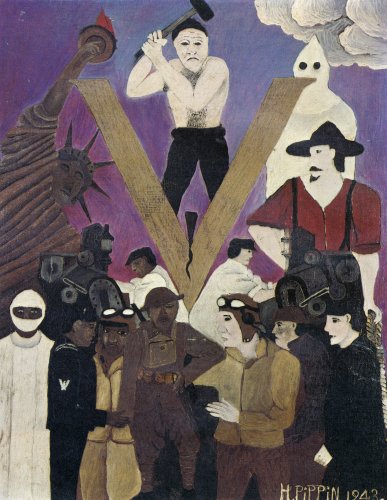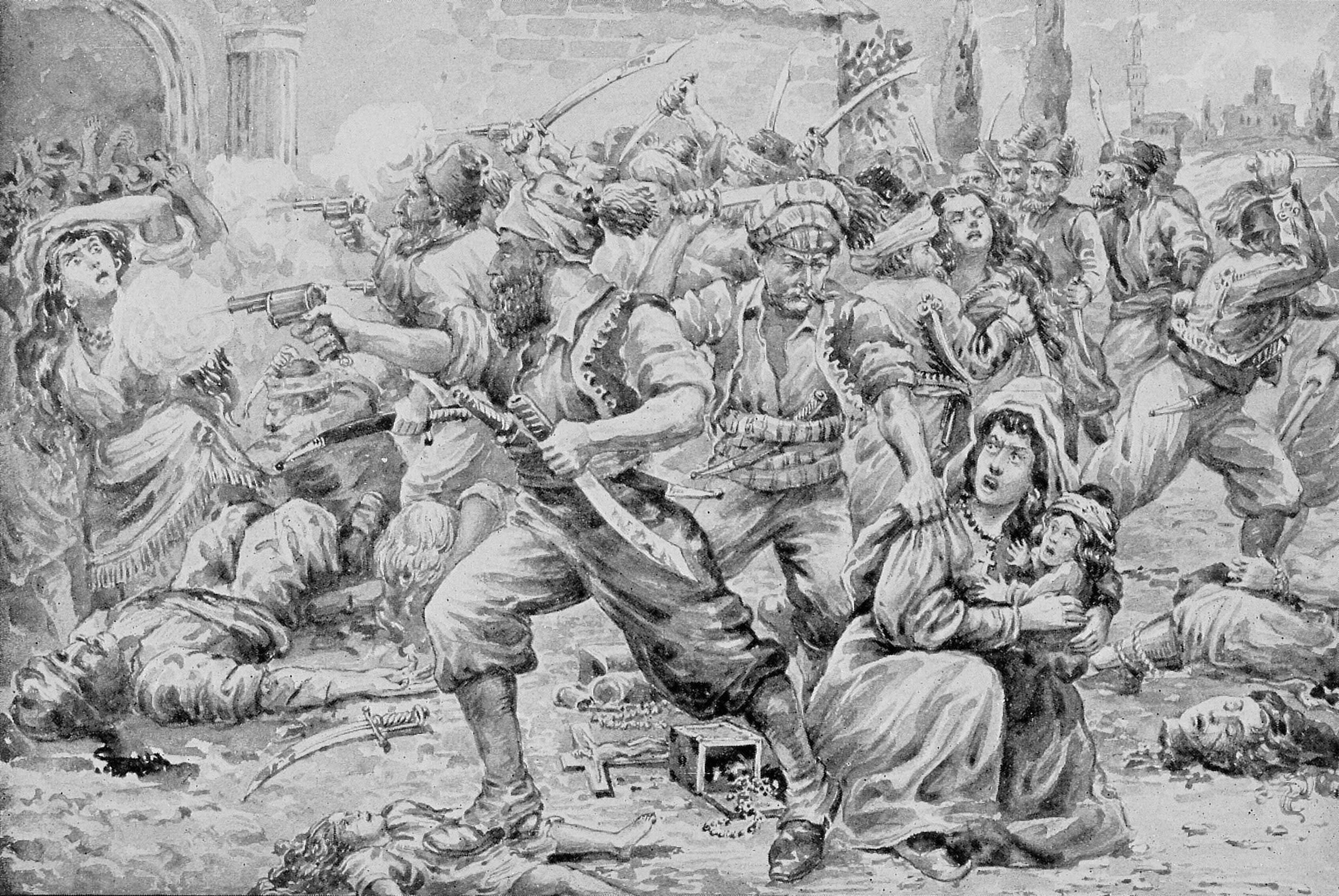|
Adana Massacre
The Adana massacres (, ) occurred in the Adana Vilayet of the Ottoman Empire in April 1909. Many Armenians were slain by Ottoman Muslims in the city of Adana as the Ottoman countercoup of 1909 triggered a series of pogroms throughout the province. Between 20,000 to 30,000 ethnic Armenians and 1,300 Assyrians. were killed and tortured in Adana and the surrounding towns. Unlike the previous Hamidian massacres, the events were not officially organized by the central government, but culturally instigated via local officials, Islamic clerics, and supporters of the Committee of Union and Progress (CUP). After revolutionary groups had secured the deposition of Sultan Abdul Hamid II and the restoration of the Second Constitutional Era (Ottoman Empire) in 1908, a military revolt directed against the Committee of Union and Progress seized Constantinople. While the revolt lasted only ten days, it reignited anti-Armenian sentiment in the region and precipitated the mass destruction o ... [...More Info...] [...Related Items...] OR: [Wikipedia] [Google] [Baidu] |
Adana
Adana is a large city in southern Turkey. The city is situated on the Seyhan River, inland from the northeastern shores of the Mediterranean Sea. It is the administrative seat of the Adana Province, Adana province, and has a population of 1 816 750 (Seyhan, Yuregir, Cukurova, Saricam), making it the largest city in the Mediterranean Region, Turkey, Mediterranean Region of Turkey. Adana lies in the heart of Cilicia, which some say, was once one of the most important regions of the Classical antiquity, classical world. Home to six million people, Cilicia is an important agricultural area, owing to the large fertile plain of Çukurova. Adana is a centre for regional trade, healthcare, and public and private services. Agriculture and logistics are important parts of the economy. The city is connected to Tarsus, Mersin, Tarsus and Mersin by TCDD Taşımacılık, TCDD train. The closest public airport is Çukurova International Airport. Etymology The name Adana (; ; ) has been used ... [...More Info...] [...Related Items...] OR: [Wikipedia] [Google] [Baidu] |
31 March Incident
The 31 March incident () was an uprising in the Ottoman Empire in April 1909, during the Second Constitutional Era. The incident broke out during the night of 30–31 Mart 1325 in Rumi calendar ( GC 12–13 April 1909), thus named after 31 March where March is the equivalent to Rumi month Mart. Occurring soon after the 1908 Young Turk Revolution, in which the Committee of Union and Progress (CUP) had successfully restored the Constitution and ended the absolute rule of Sultan Abdul Hamid II (), it is sometimes referred to as an attempted countercoup or counterrevolution. It consisted of a general uprising against the CUP within Istanbul, largely led by reactionary groups, particularly Islamists opposed to the secularising influence of the CUP and supporters of absolutism, although liberal opponents of the CUP within the Liberty Party also played a lesser role. Eleven days later the uprising was suppressed and the former government restored when elements of the Ottoman Army ... [...More Info...] [...Related Items...] OR: [Wikipedia] [Google] [Baidu] |
Hamidiye (cavalry)
The ''Hamidiye'' regiments (literally meaning "belonging to Hamid", full official name ''Hamidiye Hafif Süvari Alayları'', Hamidiye Light Cavalry Regiments) were well-armed, irregular, mainly Sunni Kurdish but also Turkish, Circassian,Palmer, Alan, ''Verfall und Untergang des Osmanischen Reiches'', Heyne, München 1994 (engl. Original: London 1992), pp. 249, 258, 389. .Van Bruinessen, Martin''Agha, Shaikh and State - The Social and Political Structures of Kurdistan'' London: Zed Books, 1992, p. 185. Van Bruinessen mentions the "occasional" recruiting of a Turkish tribe (the Qarapapakh) Turkmen, Shaw, Stanford J. and Ezel Kural Shaw, ''History of the Ottoman Empire and Modern Turkey''. Cambridge: Cambridge University Press, 1977, vol. 2, p. 246. Yörük,Öhrig, Bruno, ''Meinungen und Materialien zur Geschichte der Karakeçili Anatoliens'', in: Matthias S. Laubscher (Ed.), Münchener Ethnologische Abhandlungen, 20, Akademischer Verlag, München 1998 (Edition Anacon), zuglei ... [...More Info...] [...Related Items...] OR: [Wikipedia] [Google] [Baidu] |
Henry K
Henry may refer to: People and fictional characters * Henry (given name), including lists of people and fictional characters * Henry (surname) * Henry, a stage name of François-Louis Henry (1786–1855), French baritone Arts and entertainment * ''Henry'' (2011 film), a Canadian short film * ''Henry'' (2015 film), a virtual reality film * '' Henry: Portrait of a Serial Killer'', a 1986 American crime film * ''Henry'' (comics), an American comic strip created in 1932 by Carl Anderson * "Henry", a song by New Riders of the Purple Sage Places Antarctica * Henry Bay, Wilkes Land Australia * Henry River (New South Wales) * Henry River (Western Australia) Canada * Henry Lake (Vancouver Island), British Columbia * Henry Lake (Halifax County), Nova Scotia * Henry Lake (District of Chester), Nova Scotia New Zealand * Lake Henry (New Zealand) * Henry River (New Zealand) United States * Henry, Illinois * Henry, Indiana * Henry, Nebraska * Henry, South Dakota * Henry County ( ... [...More Info...] [...Related Items...] OR: [Wikipedia] [Google] [Baidu] |
Young Turk
The Young Turks (, also ''Genç Türkler'') formed as a constitutionalist broad opposition-movement in the late Ottoman Empire against the absolutist régime of Sultan Abdul Hamid II (). The most powerful organization of the movement, and the most conflated, was the Committee of Union and Progress (CUP, founded in 1889), though its goals, strategies, and membership continuously morphed throughout Abdul Hamid's reign. By the 1890s, the Young Turks were mainly a loose and contentious network of exiled intelligentsia who made a living by selling their newspapers to secret subscribers. Included in the opposition movement was a mosaic of ideologies, represented by democrats, liberals, decentralists, secularists, social Darwinists, technocrats, constitutional monarchists, and nationalists. Despite being called "the Young Turks", the group was of an ethnically diverse background; including Turks, Albanian, Aromanian, Arab, Armenian, Azeri, Circassian, Greek, Kurdish, and Jew ... [...More Info...] [...Related Items...] OR: [Wikipedia] [Google] [Baidu] |
Prejudice
Prejudice can be an affect (psychology), affective feeling towards a person based on their perceived In-group and out-group, social group membership. The word is often used to refer to a preconceived (usually unfavourable) evaluation or classification of another person based on that person's perceived personal characteristics, such as political affiliation, sex, gender, gender identity, beliefs, Value (personal and cultural), values, social class, friendship, Ageing, age, disability, religion, sexual orientation, sexuality, Race (human classification), race, ethnicity, language, nationality, culture, complexion, beauty, height, body weight, job, occupation, wealth, education, criminality, Fan loyalty, sport-team affiliation, Psychology of music preference, music tastes or other perceived characteristics. The word "prejudice" can also refer to unfounded or pigeonholed beliefs and it may apply to "any unreasonable attitude that is unusually resistant to rational influence". Gordon ... [...More Info...] [...Related Items...] OR: [Wikipedia] [Google] [Baidu] |
Anti-Armenian Sentiment
Anti-Armenian sentiment, also known as anti-Armenianism and Armenophobia, is a diverse spectrum of negative feelings, dislikes, fears, aversion, racism, derision and/or prejudice towards Armenians, Armenia, and Armenian culture. Historically, anti-Armenianism has manifested itself in several ways, ranging from expressions of hatred or of discrimination against individual Armenians to organized pogroms by mobs or state-sanctioned genocide. Notable instances of persecution include the Hamidean massacres (1894–1897), the Adana massacre (1909), the Armenian genocide (1915), the Sumgait pogrom (1988), and Operation Ring (1991). Modern anti-Armenianism frequently consists of expressions of opposition to the actions or existence of an Armenian state, aggressive denial of the Armenian genocide or belief in an Armenian conspiracy to fabricate history and manipulate public and political opinion for political gain. Anti-Armenianism has also manifested as extrajudicial killing or int ... [...More Info...] [...Related Items...] OR: [Wikipedia] [Google] [Baidu] |
Constantinople
Constantinople (#Names of Constantinople, see other names) was a historical city located on the Bosporus that served as the capital of the Roman Empire, Roman, Byzantine Empire, Byzantine, Latin Empire, Latin, and Ottoman Empire, Ottoman empires between its consecration in 330 until 1930, when it was renamed to Istanbul. Initially as New Rome, Constantinople was founded in 324 during the reign of Constantine the Great on the site of the existing settlement of Byzantium, and shortly thereafter in 330 became the capital of the Roman Empire. Following the collapse of the Western Roman Empire in the late 5th century, Constantinople remained the capital of the Eastern Roman Empire (also known as the Byzantine Empire; 330–1204 and 1261–1453), the Latin Empire (1204–1261), and the Ottoman Empire (1453–1922). Following the Turkish War of Independence, the Turkish capital then moved to Ankara. Although the city had been known as Istanbul since 1453, it was officially renamed as Is ... [...More Info...] [...Related Items...] OR: [Wikipedia] [Google] [Baidu] |
Second Constitutional Era (Ottoman Empire)
The Second Constitutional Era (; ) was the period of restored parliamentary rule in the Ottoman Empire between the 1908 Young Turk Revolution and the 1920 retraction of the constitution, after the dissolution of the Chamber of Deputies (Ottoman Empire), Chamber of Deputies, during the Dissolution of the Ottoman Empire, empire's twilight years. Alternative end dates for era include 1912 Ottoman coup d'état, 1912 or 1913 Ottoman coup d'état, 1913. The rule of Sultan Abdul Hamid II, Abdulhamid II had been opposed by the Young Turks, an underground movement of reformists which called for the restoration of constitutional monarchy. In 1908, a faction within the Young Turks called the Committee of Union and Progress (CUP) forced Abdulhamid II to restore the Ottoman constitution of 1876, liberal constitution of 1876 and the General Assembly in the Young Turk Revolution. Abdulhamid II had previously suspended the parliament and constitution in 1878, two years after they had been introduc ... [...More Info...] [...Related Items...] OR: [Wikipedia] [Google] [Baidu] |
Abdul Hamid II
Abdulhamid II or Abdul Hamid II (; ; 21 September 184210 February 1918) was the 34th sultan of the Ottoman Empire, from 1876 to 1909, and the last sultan to exert effective control over the fracturing state. He oversaw a Decline and modernization of the Ottoman Empire, period of decline with rebellions (particularly in the Balkans), and presided over Russo-Turkish War (1877–1878), an unsuccessful war with the Russian Empire (1877–78), the loss of Anglo-Egyptian War, Egypt, Cyprus Convention, Cyprus, Congress of Berlin, Bulgaria, Serbia, Montenegro, French conquest of Tunisia, Tunisia, and Convention of Constantinople (1881), Thessaly from Ottoman control (1877–1882), followed by a successful Greco-Turkish War (1897), war against Greece in 1897, though Ottoman gains were tempered by subsequent Western European intervention. Elevated to power in the wake of Young Ottomans, Young Ottoman 1876 Ottoman coup d'état, coups, he promulgated the Constitution of the Ottoman Empire, ... [...More Info...] [...Related Items...] OR: [Wikipedia] [Google] [Baidu] |
List Of Deposed Politicians
Deposition by political means concerns the removal of a politician or monarch. ORB: The Online Reference for Medieval Studies, 1999 It may be done by coup, impeachment, invasion, or forced abdication.The deposition of Richard II , J.P.Sommerville, History Department, University of Wisconsin The term may also refer to the official removal of a clergyman, especially a bishop, from ecclesiastical office. Deposed head of state or government politicians Deposed head of state or government monarchs Deposed politicians and monarchs at subnational level Deposed politicians and ...
|
Ulama
In Islam, the ''ulama'' ( ; also spelled ''ulema''; ; singular ; feminine singular , plural ) are scholars of Islamic doctrine and law. They are considered the guardians, transmitters, and interpreters of religious knowledge in Islam. "Ulama" may refer broadly to the educated class of such religious scholars, including Theology, theologians, Religious law, canon lawyers (muftis), judges (qadis), professors, and high state religious officials. Alternatively, "ulama" may refer specifically to those holding governmental positions in an Islamic state. By longstanding tradition, ulama are educated in religious institutions (''madrasas''). The Quran and sunnah (authentic hadith) are the scriptural sources of Sharia, traditional Islamic law. Traditional way of education Students of Islamic doctrine do not seek out a specific educational institution, but rather seek to join renowned teachers. By tradition, a scholar who has completed their studies is approved by their teacher. At ... [...More Info...] [...Related Items...] OR: [Wikipedia] [Google] [Baidu] |









